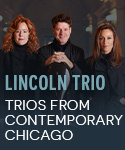On Tuesday, February 13, a CT.comreader, Mr. Brian Ventura (who kindly granted me permission to identify him by name) sent one of our writers, Jed Distler, a very remarkable email which he kindly forwarded to me. It seems that the reader had purchased a copy of Liszt’s Transcendental Etudes with Joyce Hatto on the Concert Artists label, based on the numerous recommendations this pianist and recording had received (including our own). When he attempted to transfer this recording via his computer using iTunes, the track listing revealed the artist as Laszlo Simon, who recorded the same music for BIS. Comparing the Hatto to sample tracks of the Simon available on Amazon.com, the reader was shocked to realize that the two performances appeared to him to be identical. That was the substance of his email to us.
Here is the story as Jed himself tells it:
“I became fascinated by Joyce Hatto’s story when I first read my colleague Jeremy Nicholas’ feature overview of her recordings published in the January 2006 Gramophone. Because Jeremy is not one to gush, I was intrigued by his favorable, often ecstatic comments on the performances. In late February 2006, I contacted William Barrington-Coupe (Hatto’s husband and the owner of Concert Artist), and he sent me a sampler culled from the Hatto catalogue. The sampler impressed me – indeed, certain selections bowled me over. Our subsequent e-mail and telephone exchanges couldn’t have been more collegial and friendly.
Eventually Mr. Barrington-Coupe sent me a review copy of the Liszt Transcendental Etudes, and when I met him in person in London this past September, he gave me a large quantity of CDs for review purposes. It crossed my mind that the sheer quantity of recordings and consistent high artistic quality seemed too good to be true. Still, I assumed that the artist in question and recording information were accurate, at least insofar as the titles I reviewed for Classicstoday.com. I gave five of them 10/10 ratings for highest artistic and sonic quality. When I received Brian Ventura’s e-mail I decided to investigate further. After careful comparison of the actual Simon performances to the Hatto, it appeared to me that 10 out of 12 tracks showed remarkable similarity in terms of tempi, accents, dynamics, balances, etc. By contrast, Track Five, Feux Follets, sounded different between the two sources.
I reported my findings to Mr. Ventura, and cc’d Classicstoday.com editor David Hurwitz. I also cc’d Gramophone’s editor James Inverne, plus three of my Gramophone colleagues who had written about Hatto. Then I wrote Mr, Barrington-Coupe. He quickly replied, claiming not to know what had happened, and to be as puzzled as I was. At James Inverne’s suggestion, Andrew Rose contacted me, and I uploaded three MP3s from the Hatto Liszt disc. Andrew’s research confirmed what my ears suspected: at least two Liszt tracks were identical between BIS and Concert Artist, while at least one was not.
Apparently this matter has fueled further investigation of Concert Artist releases credited to Hatto, along with the label’s numerous CDs credited to the late Italian pianist Sergio Fiorentino. Let me say that I fully stand by what I wrote about the performances, and look forward to learning their authentic provenance. And I look forward to redirecting my positive comments towards the artists who deserved them in the first place, whomever they may be.
Jed Distler ”
In a further effort to get to the bottom of this anomaly, I contacted Mr. Barrington-Couple independently to seek clarification, and that is where the matter stands at this point. Meanwhile Gramophone, sensing a “scoop,” rushed onto its website a somewhat skewed version of this story, with the actual sequence of events and persons involved glossed over or omitted entirely (and this is the version reprinted in various other publications as well). I do understand Gramophone’s motivations, and really don’t care about being first past the post. This has the makings of a critic’s nightmare for the publications most committed to Hatto’s work. After all, if these discs turn out to be fake, as seems likely, and if the same critics who praised them to the skies panned their original incarnations, then it won’t just be Hatto and her label who wind up with mud on their faces. And Gramophone has, alongside MusicWeb, been Hatto’s most ardent champion.
That said, I firmly believe that critics who review music based on what they actually hear, rather than what the name of the artist leads them to believe they ought to hear, have little cause for concern. No rational person expects anyone, professional critic or layman, to be able to identify blindly any but a small handful of favorite recordings of any one piece. This is particularly true when one accepts as given that fact that the new recording really is new, however similar to others it may sound–never mind that the “pirate” may have tweaked the transfer in any number of subtle and not-so-subtle ways to disguise its origins. With dozens, if not hundreds, of available versions of most repertory standards, and the catalog in a constant state of flux regarding both new and reissued material (including countless tiny independent and “vanity” labels full of unknown artists), reviewing recordings these days evidently involves a small but real element of risk.
We critics have a choice: to stick only to major labels (or the remnants of them) and the certified “big” artists, or to try to identify and promote excellence wherever we find it; to give new artists and their small, often financially strapped companies their day in the sun; and to try to sift out the wheat from the chaff for our readers, regardless of provenance or the trappings of fame. The process necessarily begins with a perfectly sensible leap of faith: trust in the identity of the performers. Beyond a fair and accurate appraisal of the music on the disc, discovering fraud must necessarily be a matter of chance and opportunity. It is no more the critic’s job than it is the purchaser’s. And while this event will no doubt be turned into a Big Deal as the usual factions grind their usual axes, the fact is that 99.9% of all classical music productions are entirely honest, and critics are correct in believing them so and in giving them the benefit of the doubt.
Besides, it’s probably too much to ask the victims of a hoax — what may turn out to be a very, very good one at that — not to pass up the opportunity to rain down curses on the perpetrators. Music critics in general aren’t known for their sense of humor, particularly when it comes to laughing at themselves. Bernard Shaw was an exception, of course, but then he was more a brilliant writer than a factually accurate critic. I almost hope that Miss Hatto and her husband engineered this whole thing to teach a lesson to the “establishment” that effectively forced her into premature retirement from the concert stage in the first place. What a delicious bit of revenge that would be! The only real problem is that the public is also involved, and to deceive innocent music lovers into spending their limited budgets on recordings they otherwise would not want or need really is unforgivable.
As for Mr. Barrington-Coupe, he can very easily answer his accusers. He is being accused of stealing, among other things, entire concerto recordings. As I told him a few days ago, either he hired an orchestra, engineers, a recording space, a conductor, and paid them all, or he did not. Even Ms. Hatto’s solo recordings were not made just by her husband alone. In short, many others were involved, and they are even credited on the booklet jackets. Let some of these parties come forward and acknowledge their participation. Let Mr. Barrington-Coupe produce receipts, schedules, or whatever documentation is in his possession.
He should do it quickly; the longer he waits, the worse the situation looks for him. And if he has been the victim of “the old switcheroo” at some stage in the production process, he at least ought to have original master tapes of his wife that sound markedly different from the fakes. If so, let’s hear them under conditions that brook no uncertainty regarding their authenticity. Incidentally, in addition to the fake performances already listed on various websites, Hatto’s Saint-Saëns Second Piano Concerto appears to be the Collard/Previn on EMI. Concert Artists has issued it twice, at correct pitch in tandem with the Tchaikovsky Second Concerto, and a half-tone flat (and time-stretched) alongside the same composer’s Fourth and Fifth Concertos.
Her Ravel seems to be Roger Muraro’s cycle on Accord (Universal Classics France), recorded in May, 2003. It’s worth pointing out in this case that the La Valse is a special edition prepared by Muraro, and in his review Jed noted the unique textural layering in just this performance. The Muraro cycle was never released in the United States and consequently was not reviewed by ClassicsToday.com. It seems that a pattern is emerging that Hatto hunters may want to keep in mind. The perpetrator seems to be avoiding (so far) the wholesale raiding of British independent labels, for the obvious reason that this would risk detection at home. This may also explain why Concert Artist has been so unwilling to seek international distribution, despite many requests and the urging of Hatto fans. Can it be that what began as a small-scale local scam took on a life of its own?
Adding further evidence for this hypothesis, Hatto’s Messiaen Vingt Régards is listed in the Gracenotes database as Paul Kim’s Centaur recording, though this latter surmise is still subject to further confirmation. Jed reviewed the Kim for us on its initial release some time ago, and his rating for artistic quality was exactly the same as that given to Miss Hatto’s recording: 8. The rating for sound varied from 7 (for Kim) to 9 (for Hatto), but this can be explained by the fact that the sonics of the originals have been almost invariably altered in the transfer process. One particularly startling example is Feux follets, from the Liszt Transcendental Études, which sounds so different from the original (Nojima on Reference Recordings) that the much smoother articulation at first suggests a different performance altogether.
At the heart of this whole controversy, the real question isn’t so much what Hatto and her husband may have done. It is “Why?” As I’ve already pointed out, it’s not difficult in today’s digital marketplace to engineer a fake, but there’s so little money in doing so that one can only wonder why anyone would want to bother. What on earth is the point in taking famous recordings by major artists and issuing them on a vanity label (with no international distribution) as the work of a virtually unknown recluse? The sheer level of chutzpah involved in lifting entire concerto recordings wholesale from major labels (including the Haitink/Ashkenazy Brahms Second Concerto, or the Bronfman/Salonen Rachmaninov Second and Third Concertos) is either breathtaking, or simply insane.
We also should not forget that somewhere in this mess there is, apparently, the very human story of a career cut short, a struggle with a terminal illness, and a loving husband who lost his wife–unless that turns out to be nonsense as well. Robert von Bahr of BIS records captured the human dimension very sensitively when he told me: “If it is his love for his wife that was the reason behind this, I for one am not inclined to press charges.”
So let’s all keep an open mind until all the facts are in, and Mr. Barrington-Coupe has an opportunity to answer his critics and make his case. Everyone is innocent until proven guilty, and damning as the evidence appears, it still is not proof of direct culpability. Something surely happened; just how and why we don’t know yet. Besides, behind all of the hot air and self-righteous pretension, both current and to come, I suspect most of us will be enjoying ourselves. After all, at a minimum, everyone loves a scandal, and the hunt to discover how much Hatto is real, and how much is not, ought to provide classical music fans with many hours of pleasant diversion.
Finally, if it hadn’t been for the passion of one music-loving reader, Mr. Ventura, would we even be having this conversation? Let’s give him, and Jed, the credit they deserve for caring, and doing the right thing with speed, thoroughness, and tact. We are at the beginning of a process; there will be many more revelations to come, and I am happy to leave it to those far more involved than we ever were in Miss Hatto and her work to report on them. We have many other CDs to review, and no shortage of fine, hopefully authentic recordings to bring to your attention.
David Hurwitz































